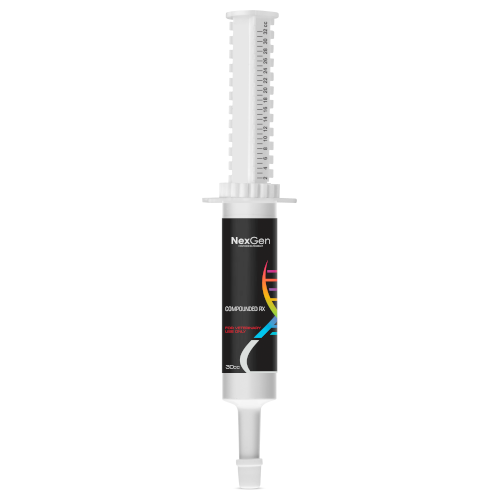
Toltrazuril 15 gm + Diclazuril 3 gm, Oral Paste, 30mL Syringe
Login for pricing
- Brand
- Mixlab
- SKU:
- NC-0319
- Product Type:
- Paste
- Size:
- 30ml
- Administration:
- Oral
In the 1960’s and 1970s, a clinical syndrome referred to as “segmental myelitis” was first described based on a studies involving groups of horses in the eastern United States. Protozoa were first reported in lesions from horses by researchers in 1974. The syndrome was well-described, but the parasite involved was misidentified as Toxoplasma gondii; later, it became clear due to the illustrations taken from studies that the protozoan causing EPM was in fact Sarcocystis neurona.1One researcher called the syndrome “equine protozoan encephalomyelitis,”2 which was later standardized to equine protozoal myeloencephalitis, or EPM.
EPM is an extremely debilitating disease that is ubiquitous on horse farms and facilities in the Americas, although only a small percentage of horses that are exposed to the S. neurona organism will develop clinical disease. The S. neuronaorganism infects horses when they ingest the organism in contaminated feed or water. The definitive host of this organism is the opossum, which passes the organism in its feces.2 Other hosts of S. neurona are believed to include armadillos, skunks and domestic cats. More than 50% of all horses in the US may have been exposed to S. neurona but very few actually develop clinical disease.
Once ingested, S. neurona sporocysts migrate from the intestinal tract into the bloodstream and cross the blood/brain barrier. There, they begin to attack the horse's central nervous system. The onset of the disease may be slow or sudden and, if left undiagnosed and untreated, EPM can cause lasting neurological damage.
The clinical signs of EPM can vary, and are usually asymmetrical (not the same on both sides of the horse). Symptoms can depend on the severity and location of the lesions that develop in the brain, brain stem or spinal cord.2 These may include:
- Incoordination
- Weakness, which may worsen when going up or down slopes
- Muscle atrophy along the topline or in the hindquarters
- Drooping eyes, ears or lips
- Difficulty swallowing
- Seizures or collapse
- Abnormal sweating
- Loss of feeling along the face, neck or body
- Head tilt with poor balance
- Splay-footed stance, leaning
Diagnosis of EPM can be difficult to make, as there is no specific assay for it and because clinical signs of EPM can mimic other neurological diseases. Veterinarians typically conduct a thorough physical examination of the horse and may conduct blood and cerebrospinal fluid (CSF) analysis.
Where to buy Toltrazuril + Diclazuril
Toltrazuril + Diclazuril is available in the U.S. through several pharmaceutical manufacturers and through veterinary custom compounding companies.
Please consult your veterinarian prior to beginning any treatment regimen.
FOR RX ONLY: A valid prescription from a licensed veterinarian is required for dispensing this medication.
1Merck Veterinary Manual.
2Reed, S M et al. Equine Protozoal Myeloencephalitis: An Updated Consensus Statement with a Focus on Parasite Biology, Diagnosis, Treatment, and Prevention. Journal of veterinary internal medicine vol. 30,2 (2016): 491-502. doi:10.1111/jvim.13834.
3Dubey, J.P. et. al. (2001). A review of Sarcocystis neurona and equine protozoal myeloencephalitis (EPM). Veterinary parasitology. 95. 89-131. 10.1016/S0304-4017(00)00384-8.









